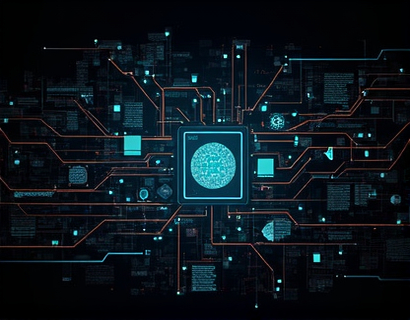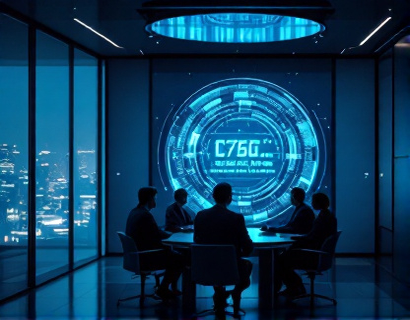Advanced User Activation Strategies: Revolutionizing Business Growth and Engagement
In the rapidly evolving landscape of business, user activation has emerged as a pivotal strategy for driving growth and enhancing engagement. The traditional approach to user onboarding often falls short, leading to underutilized features and high churn rates. This article delves into the realm of advanced user activation strategies, exploring how businesses can transform end-user engagement to achieve sustainable growth and higher customer satisfaction.
The core idea behind advanced user activation is to create a seamless and personalized experience for users from the moment they interact with a product or service. This involves a series of strategically designed steps that guide users through the value proposition, helping them understand and leverage the full potential of the offering. By doing so, businesses can foster deeper connections, increase user retention, and ultimately drive revenue.
Understanding User Activation
User activation is more than just setting up an account or completing a tutorial. It encompasses a comprehensive approach that includes onboarding, engagement, and retention strategies. The goal is to ensure that users not only sign up but also actively use the product or service and derive value from it. This process involves understanding user behavior, preferences, and pain points to tailor the activation journey accordingly.
Effective user activation can lead to several key benefits. Firstly, it increases the likelihood of users becoming power users, who in turn can become advocates for the brand. Secondly, it reduces the onboarding friction that often leads to user drop-off. Lastly, by enhancing the user experience, businesses can improve customer satisfaction and loyalty, leading to higher retention rates and positive word-of-mouth.
Key Components of Advanced User Activation
To implement advanced user activation strategies, businesses need to focus on several critical components. These include personalized onboarding, interactive tutorials, gamification, and continuous engagement. Each of these elements plays a vital role in creating a robust activation framework.
Personalized Onboarding
Personalized onboarding is the first touchpoint in the user activation journey. It involves tailoring the initial experience to the user's specific needs and context. This can be achieved through data-driven insights, such as user demographics, behavior patterns, and preferences. By personalizing the onboarding process, businesses can address individual pain points and highlight the most relevant features, making the experience more meaningful and engaging.
For instance, a software solution for project management might start by identifying the user's role within an organization and presenting features that are most pertinent to that role. This targeted approach ensures that users feel the immediate value of the product, reducing the likelihood of abandonment.
Interactive Tutorials
Interactive tutorials are another essential component of advanced user activation. Unlike traditional video tutorials or static guides, interactive tutorials engage users through hands-on experience. These tutorials can be designed as step-by-step guides that users can follow within the product itself, providing real-time feedback and support.
Interactive tutorials not only help users understand complex features but also build confidence in using the product. By breaking down the learning process into manageable steps, businesses can ensure that users are not overwhelmed and can progress at their own pace. This approach has been shown to significantly improve user satisfaction and retention.
Gamification
Gamification leverages game design elements to make the user activation process more engaging and enjoyable. By incorporating rewards, challenges, and progress tracking, businesses can motivate users to explore and utilize the full range of features offered.
For example, a productivity app might introduce a badge system where users earn badges for completing certain tasks or achieving milestones. These visual rewards not only provide a sense of accomplishment but also encourage users to continue engaging with the product. Gamification can transform a mundane task into a rewarding experience, fostering a deeper connection with the brand.
Continuous Engagement
User activation is not a one-time event but an ongoing process. Continuous engagement strategies are crucial for maintaining user interest and ensuring long-term retention. This involves regular check-ins, personalized notifications, and timely updates to keep users informed and involved.
One effective method is to send contextual reminders or tips based on the user's activity patterns. For instance, if a user frequently uses a particular feature, the system can send a notification with advanced tips or new updates related to that feature. This keeps the user engaged and informed, reducing the risk of feature fatigue.
Additionally, businesses can leverage user feedback to continuously improve the product and activation strategies. By actively listening to user concerns and suggestions, companies can make data-driven decisions to enhance the user experience and address any issues proactively.
Implementing Advanced User Activation Strategies
Implementing advanced user activation strategies requires a thoughtful and methodical approach. Here are some steps businesses can follow to integrate these strategies effectively:
- Conduct User Research: Understand your target audience through surveys, interviews, and analytics. Identify their needs, preferences, and pain points to tailor the activation journey.
- Design a Personalized Onboarding Flow: Create a customized onboarding experience that addresses the specific needs of different user segments. Use data to guide the design process and ensure relevance.
- Develop Interactive Tutorials: Design interactive tutorials that complement the onboarding process. These should be easy to follow, visually appealing, and provide immediate value to the user.
- Incorporate Gamification Elements: Introduce game-like features such as badges, leaderboards, and challenges to make the activation process more engaging. Ensure that these elements align with the user's goals and motivations.
- Establish Continuous Engagement Practices: Implement a system for regular check-ins and personalized communications. Use analytics to track user behavior and adjust engagement strategies accordingly.
- Monitor and Optimize: Continuously monitor the effectiveness of activation strategies using key performance indicators (KPIs) such as user retention, engagement rates, and feature adoption. Use A/B testing to refine and optimize the activation journey.
By following these steps, businesses can create a robust user activation framework that not only enhances the initial user experience but also drives long-term success.
Case Studies and Success Stories
Several businesses have successfully implemented advanced user activation strategies, leading to significant improvements in user engagement and retention. Here are a few notable examples:
- Software Company X: By personalizing the onboarding process based on user roles, Company X saw a 40% increase in feature adoption and a 25% reduction in churn rate within the first three months of implementation.
- E-commerce Platform Y: Through interactive tutorials and gamification, Platform Y increased the average time spent on the site by 30% and boosted conversion rates by 20%.
- Project Management Tool Z: By incorporating contextual reminders and personalized notifications, Tool Z achieved a 50% higher user engagement rate and a 35% increase in project completion rates.
These success stories highlight the tangible benefits of advanced user activation strategies. By focusing on personalized experiences, interactive learning, and continuous engagement, businesses can significantly enhance user value and drive sustainable growth.
Challenges and Considerations
While the benefits of advanced user activation are clear, businesses must also be aware of potential challenges and considerations:
- Data Privacy Concerns: Personalization relies heavily on user data, which raises privacy concerns. It is crucial to handle data responsibly and transparently, adhering to regulations such as GDPR.
- Resource Intensity: Implementing advanced activation strategies can be resource-intensive, requiring investment in technology, design, and ongoing maintenance. Businesses must weigh the costs against the potential benefits.
- User Fatigue: Overloading users with too many activation steps or notifications can lead to fatigue and disengagement. It is essential to strike the right balance and keep the experience enjoyable.
By being mindful of these challenges, businesses can navigate the implementation process more effectively and maximize the positive impact of advanced user activation strategies.
Future Trends in User Activation
The field of user activation is continually evolving, driven by technological advancements and changing user expectations. Some key trends to watch include:
- AI and Machine Learning: The integration of AI and machine learning can enhance personalization and automation in activation strategies. These technologies can analyze user behavior in real-time, providing hyper-personalized experiences.
- Voice and Conversational Interfaces: With the rise of voice assistants and chatbots, businesses can leverage conversational interfaces to guide users through the activation process in a more natural and intuitive way.
- Augmented Reality (AR) and Virtual Reality (VR): AR and VR technologies offer immersive experiences that can revolutionize onboarding and engagement. These technologies can provide interactive and memorable activation journeys.
Embracing these trends can help businesses stay ahead of the curve and continue to innovate in user activation, ensuring long-term success and growth.
Conclusion
Advanced user activation strategies represent a transformative approach to enhancing user engagement and driving business growth. By personalizing the onboarding experience, creating interactive tutorials, incorporating gamification, and ensuring continuous engagement, businesses can unlock the full potential of their user base.
While the journey to implementing these strategies may present challenges, the rewards are substantial. Higher retention rates, increased satisfaction, and sustainable growth are within reach for businesses that invest in advanced user activation. As the landscape continues to evolve, staying informed and adaptable will be key to maintaining a competitive edge.










































